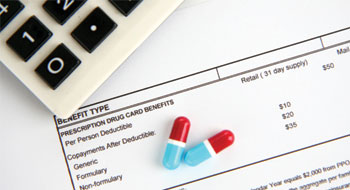
A national pharmacare program wouldn’t break the bank and should in fact save taxpayers billions of dollars, a new analysis suggests.
Spending on prescription drugs in Canada could drop by 32%, or $7.3 billion, if the country adopted a universal public drug plan, the authors said in the article, published Monday in the Canadian Medical Association Journal.
They noted that Canada is the only country with universal healthcare that does not also have universal coverage for prescription drugs.
Read: Drug plan trends in Canada
Instead, drug costs are absorbed by a crazy quilt of payers: the federal government covers First Nations’ drug costs, provincial governments absorb the drug costs of some residents, private sector employers and employees share costs where extended healthcare programs are provided as a work benefit, and some people are left to pay for their prescription drugs out-of-pocket.
Lead author Steven Morgan said the savings would mainly be generated through better prices for generic drugs, lower costs for brand name drugs and smarter prescribing practices—things like substituting generic drugs for brand name drugs when the situation permits. Having a single purchaser would give the country clout when it came to getting the best prices for drugs, he suggested.
Read: Drug plan waste costs plan sponsors $5.1 billion: Report
Other savings were not factored into the analysis but should materialize, Morgan noted. It’s currently known that about one out of 10 people don’t take drugs as prescribed because they cannot afford to. If those people were in a position to follow the regimens their doctors prescribed, that should result in better health and lower overall use of the healthcare system.
The calls for pharmacare in Canada go back decades; universal drug coverage was recommended by the Royal Commission on Health Services in 1964. But the idea has not been embraced by federal governments, perhaps because of fears of the price tag such a program might carry.
The current federal government has repeatedly signalled it’s not interested in making huge forays into the health sector. Still, Morgan argued that this is an opportune time to have such a discussion.
“We’re in an election year. And so this is an important year…in terms of thinking about what Canadians want and what Canadians in essence will ask their governments to do,” said Morgan, a professor in the University of British Columbia’s school of population and public health.
Read: Specialty drug spend unsustainable
“It’s going to take political will. And political will is in part the sum of political incentives. That is the sum of what the electorate, what Canadian citizens, will tell governments that they’re willing to vote for.”
The analysis suggested a single-payer system for drugs would cut private-sector drug costs—those absorbed by private companies, unions and uninsured individuals—by more than $8 billion. But the cost to government could rise by $1 billion.
Morgan said taxpayers might be willing to pay an additional dollar in taxes for $8 in savings on prescription drug-related costs. “I would take that return on investment any day,” he said.
Health economist Steven Lewis agreed that pharmacare could be a win-win: “Better for the public and better value for money.”
Read: The next generation of benefits plans
But Lewis was not certain the savings would be as significant as Morgan and his co-authors predicted.
“Practice is very hard to change—experts have been cautioning physicians about overdrugging the elderly for decades and many have expressed concerns about over-medicalization, but the culture is hard to change. So … I’m less optimistic about better prescribing on a grand scale,” he said in an email.
The authors are from the University of British Columbia, the University of Toronto and Harvard University.
